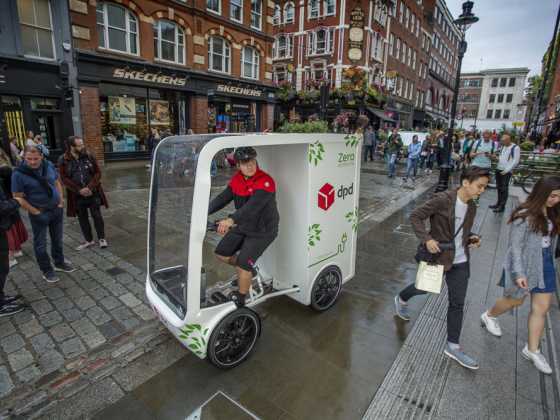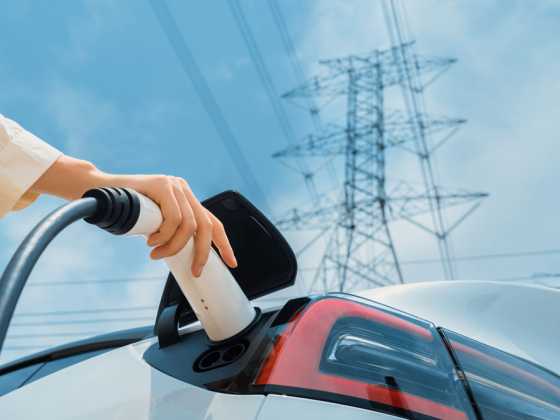Keeping on top of an evolving fleet industry

According to research, 38 per cent of fleet managers find it hard to stay informed about new developments in the fleet sector. Shell has released a report identifying the future trends affecting the industry and how fleets can stay on top of them
While sixty-two percent of fleet managers in the UK are excited about the role new technologies will play in their sector, over a third (38 per cent) find it hard to stay informed about new developments, according to a Shell study.
With forty-one per cent say that staying competitive in a changing industry is their biggest challenge, fuel giant Shell has released a report covering the main areas of change within fleet management and how fleets can adapt.
The Future of Fleet report looks at alternative fuels, driverless vehicles, mobility, data and smart infrastructure.
It highlights how alternative fuels, new technology and services are reshaping the sector and creating new opportunities for companies to enhance their operations, boost efficiency and stay competitive.
“In the UK, the pace of change in commercial fleets is accelerating rapidly and we believe the industry will look radically different within the next 20 years” said Katya Atanasova, vice president of Shell Fleet Solutions.
“Alternative fuels, data analytics, automation and greater connectivity will require new business models, skills and partnerships between fleet operators, manufacturers, energy and technology providers and start-ups.
“For those responsible for managing fleets, there is also a need to engage drivers and the senior management in their organisations, to help test and capitalise on these new developments.”
A changing industry
In its foreword, the report likens changes to the fleet sector to the radical evolution that has taken place in retail, entertainment and travel, with new players like Amazon, Netflix and Expedia shaking up traditional ways of working.
It says: “A convergence of new technologies, services and greater connectivity is set to reshape the sector, requiring new skills as well as creating new industry players and business models.
“By 2040, the fleet industry could transform almost beyond recognition.”
To help UK fleet managers understand these changes, the report examines some of the most interesting new ideas in the industry.
Acceleration of alternative fuels
For most fleets, a variety of different fuel types will be required to cater for different types of vehicle and usage scenarios. Electricity, hydrogen, liquid natural gas (LNG), gas-to-liquid (GTL) and biofuels can all play a role and so comparing, benchmarking and partnering to provide the right infrastructure will be key for companies to deliver the best value and vehicle performance.
The report says: “As the market shifts away from traditional fuels, no one can afford to stand still. Leave it too late to transition to new fuels and vehicle types, and you may find yourself burdened with the cost and disruption of an unnecessarily rapid whole-fleet transition.”
It says that businesses that start future-proofing their fleets now “will be able to do so from a stronger position of organisational competence and readiness, rather than finding themselves forced to rush through changes at the last minute in response to the advantages gained by their better-prepared competitors.”
The report also calls on fleets to recognise that one fuel will not necessarily suit all operations. “A range of new and innovative fuel types exists or are in development, each of which is best suited to different types of vehicles and use cases.”
The report adds that only with a range of fuels can fleet managers meet the needs of all users, from short urban delivery drivers to long-haul heavy-goods hauliers.
Vehicle-less fleets and mobility
Ride-hailing and sharing apps are booming in the consumer market but there is huge potential in the commercial sector. This could see fleet professionals using technology to share loads, manage deliveries on demand and remove the capital and operational costs of owning vehicles themselves. Aggregation of services such as fuel cards, road toll payments, discounts on tyres and repairs and business services such as invoicing could all be combined into mobile platforms for drivers and fleet operators to use.
The report says: “Adapting the concept of ride-hailing services like Uber could dramatically change the commercial sector. Companies could operate with ‘vehicle-less’ fleets, using technology to call for deliveries on-demand and combine loads with other businesses for greater efficiency. This ‘asset-light’ model will remove many of the capital and operational costs of purchasing and maintaining vehicles.”
To enjoy a competitive advantage, the report says fleets need to start preparing now. It says: “The potential for improving fuel efficiency and for reducing downtime is huge, given the greater visibility and control the development of intelligent vehicles will offer. For organisations and for fleet managers, they represent a Darwinian pressure that will drive the evolution of fleets. Ultimately, the sector will emerge stronger, more efficient and more agile. But as with any process of evolution, there will be winners and losers. The key to being among the winners, is to start preparing now.”
Diagnostics and maintenance
The way we look after vehicles is also likely to change, with routine maintenance and servicing delivered remotely by software download.
New ‘self-healing’ materials, such as Harvard University’s self-healing material for use in vehicle tyres, will improve durability, fuel efficiency and replacement cycles for vehicles. Several automotive manufacturers and suppliers are also using 3D printing to produce replacement parts onsite to reduce maintenance and downtime.
The report says: “Techniques such as 3D printing, could make vehicle maintenance cheaper, as parts can be produced on-demand, on-site, reducing the cost of shipping and storing spares. Stratasys has developed an additive manufacturing platform being used by Volvo, Daihatsu, Jaguar and McLaren to 3D print prototypes, components and test models.
“Intelligent robotics will improve maintenance, with smarter, smaller robots able to conduct quicker, more regular inspections of vehicles to identify potential issues earlier. Academics are also researching the behaviour of insects such as ants and bees, to develop swarm robotics, which will enable small, individual robots to work collectively to make repairs to both vehicles, roads and traffic infrastructure.”
The power of data
Autonomous, connected vehicles are generating huge volumes of information, which can be combined with data about weather and road conditions, drivers’ personal health and wellbeing and details about passenger, customer or supply chain demand. Taken together, this can greatly help enhance fleet planning, boost efficiency and provide valuable commercial data to report to a wider business.
Shell’s survey identifies the demand for more training, education and new skills to analyse and manage data effectively.
Programmatic infrastructure
Smarter infrastructure and vehicles may also enable cars and vans to automatically calculate the optimum location for refuelling, repair and parking based on the time of day, traffic and the next job or journey they have booked. This will help drivers choose the best options but with the rise of automation and intelligent systems, vehicles could also drive themselves to the ideal place for their next job.
Other future changes could include temperature-sensitive, photo-luminising paint, which could create changing road patterns to remind drivers of weather conditions and safety information.
Bracing for change
The report concludes that amid all this change, fleets need to start preparing now. This means assessing and understanding the current and future requirements of their organisation, therefore having time to build a business case for change.
The report urges the fleet and transport sectors work together. It says: “The pace of change makes it hard for even the largest players to guarantee what will come next. As a result, we are seeing many new collaborations between organisations seeking to share advice and develop common standards.
“Looking for partners outside your immediate sector – such as technology, energy infrastructure or consulting – can help test ideas and identify best practice.”






